While the most popular 3D printing material, PLA, is easy to print and doesn’t require high temperatures, it can be brittle and inflexible. For this reason, many users turn to other, higher-temperature materials that offer enhanced mechanical properties, like PETG, ABS, or nylon.
Unfortunately, some of these materials, especially ABS and polycarbonate, require a consistently warm ambient temperature and are sensitive to external factors like air drafts. Failing to keep the print warm enough and away from drafts can lead to print quality issues, such as warping or layer separation.
The number one way to combat these issues and keep a consistent ambient temperature around your printer is to use an enclosure. It’s basically an insulating container: You place your printer inside of it to trap the heat it produces as well as to block any drafts. In some scenarios, however, an enclosure just isn’t enough to keep a machine’s ambient temperature warm, especially if the printer has a large build volume.
Rather than relying on heat emitted from the bed and nozzle, you can add an enclosure heater, which is a device that heats the space inside your 3D printer enclosure. These heaters vary a lot in their technology and can be any device that provides heat, such as space heaters, infrared bulbs, halogen lamps, and car heaters.
In this article, we’ll go over the best enclosure heaters you can buy (or DIY) to help keep your printer warm. For each section, we’ll discuss a different enclosure heater option, providing examples, the benefits, disadvantages, and more. Enjoy!
Considerations & Factors
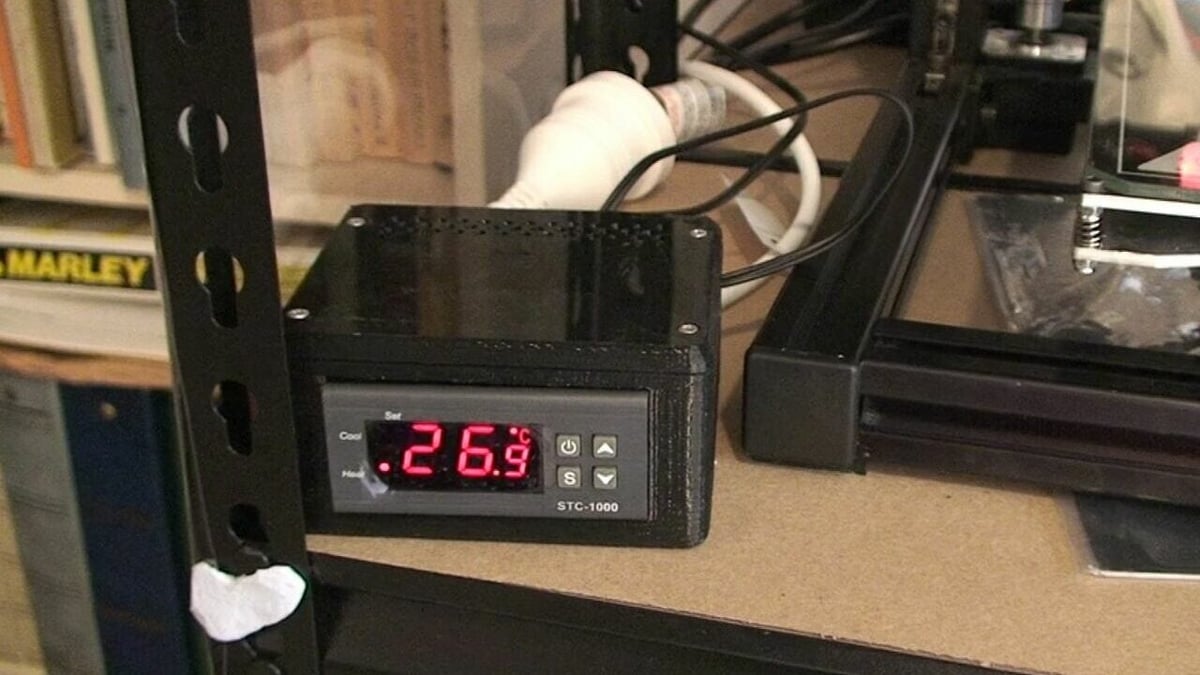
Before we dive into our selections for the best enclosure heaters, there are a few factors you should take into consideration when choosing a heating device. In this section, we’ll go over a few of the most important considerations.
Heat
An ambient temperature of around 60 °C works great for ABS, so you should look for heaters that can reach this. Of course, many heaters aren’t advertised as capable of reaching temperatures this high, but remember that enclosures are a lot smaller than entire rooms, which many heaters on this list are meant to heat.
Electronics
You should also consider the maximum temperature that your printer, including its hardware and electronics (e.g. mainboard), can handle. Although the maximum functional temperature of your machine isn’t usually written on the box, it’s a safe bet to keep your enclosure’s ambient temperature below 80 °C, unless your electronics are outside the enclosure.
Control
Third, you should consider how you will control the temperature of your heater. Some heating devices come with integrated temperature controllers that can monitor the ambient temperature and adjust their power to control it, but many do not. For heaters without a controller, you’ll have to install a temperature controller to be able to regulate the temperature.
Size
Fourth, you should consider the size of your heater. If your desired heater can’t fit into your enclosure, you can try to route the heater’s output side (where hot air flows out) to the enclosure using insulative tubing. However, it’s easiest to purchase a heater that fits into your printer’s existing enclosure, assuming you already have one. If you don’t have an enclosure for your printer yet, check out the best enclosure options to build.
Be Safe!
Lastly, it’s important to mention safety. No matter what enclosure heater you get, it’s important to remember that enclosed heat can cause fires. We recommend keeping a fire extinguisher near your enclosure and also installing a temperature sensor with an automatic shutoff system that will prevent your printer’s space from getting too hot.
Now, let’s get to the heaters!
PTC Space Heater
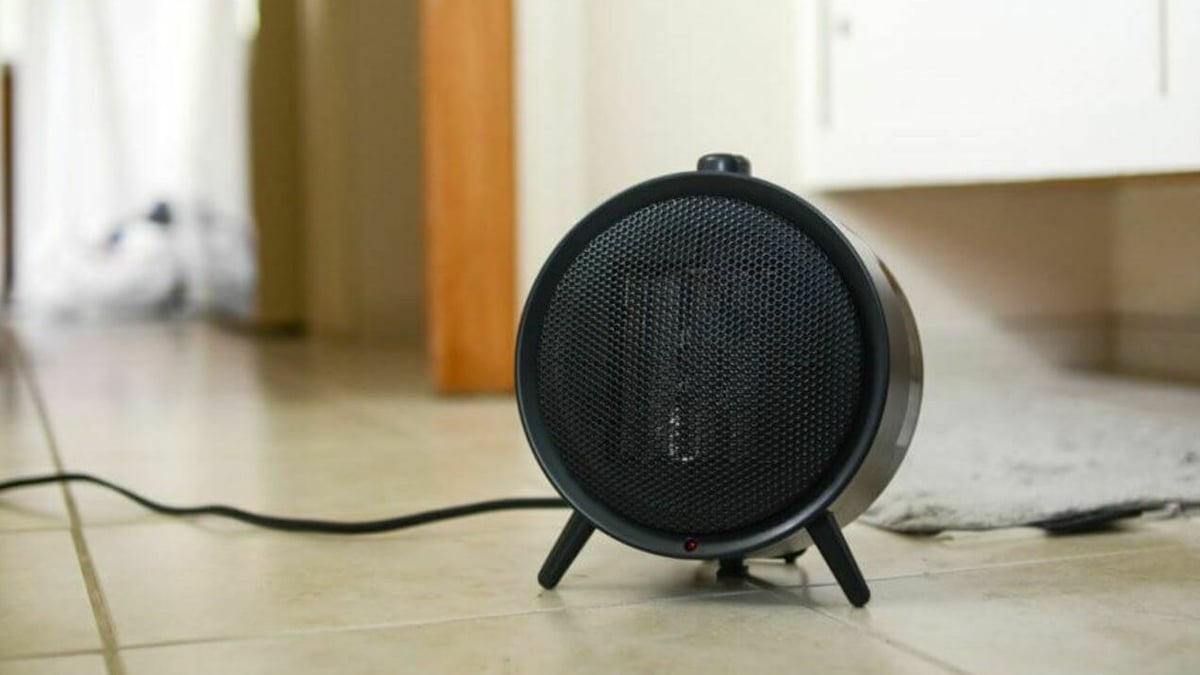
A positive temperature coefficient (PTC) space heater is a heating device that uses a fan to heat up a space, like a bedroom. PTC space heaters are usually pretty inexpensive and can be found online or in local department stores, making them a great option for those on a budget.
Most home space heaters will produce more than enough heat for printing high-temperature materials in an enclosure. However, it’s important to note that many PTC space heaters, especially those on the lower end of options, don’t have a temperature controller. For this reason, be prepared to attach one with a thermistor to your heater so the device doesn’t overheat the enclosure.
These heaters are very easy to set up, usually requiring just plugging in the power cable into a wall outlet. Before purchasing one, though, make sure to check the heater’s dimensions, as PTC heaters tend to be pretty large and may not fit into your enclosure. Since most PTC space heaters probably won’t fit into your printer’s enclosure, and you wouldn’t want to heat an entire room up, you can try routing the hot air from outside the enclosure (e.g. via insulated tubes).
- Price: ~$50
- Temperature controller required: Yes
- Assembly: Easy
Youyoute Mini Heater
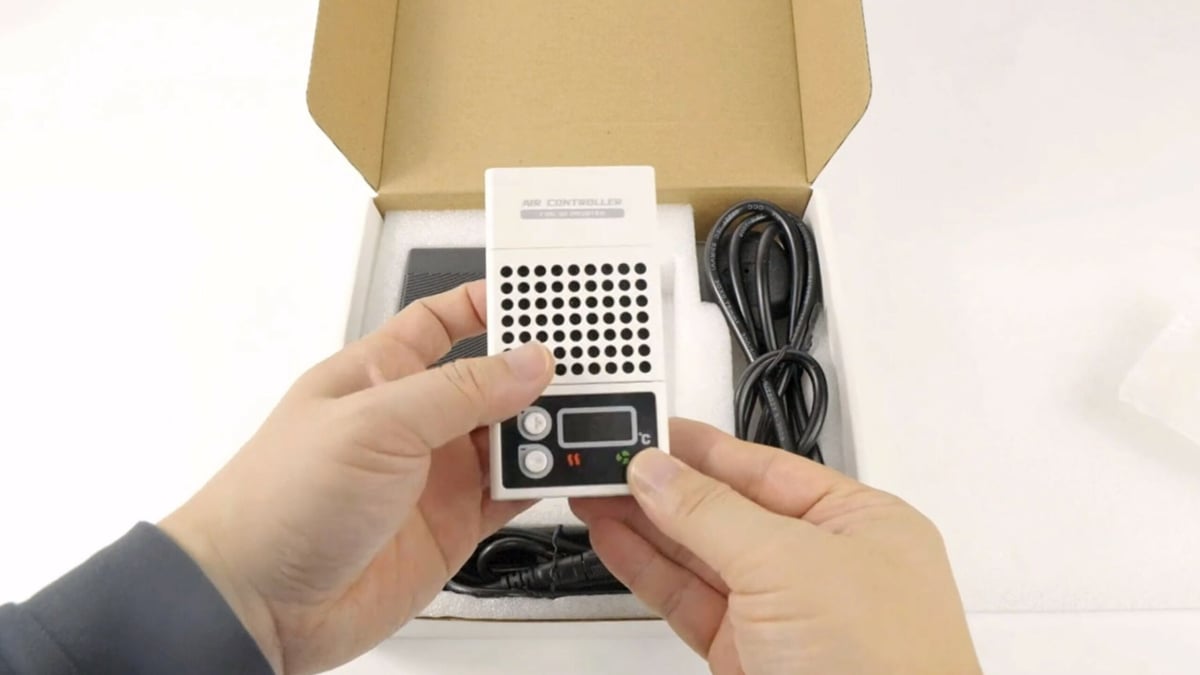
The Youyoute Mini Heater was specifically designed for 3D printers. The manufacturer mainly markets the device towards resin printers, which can also benefit from a warm print space; however, this device should also work perfectly with any FDM 3D printers in an enclosure.
The Youyoute Mini Heater is a bit on the pricier side of this list, but it’s got a few features that might make the cost worth it. First off, the device is very simple to use, with a straightforward 2-button temperature controller. Plus, the manufacturer states that the controller is accurate down to 0.1 °C, so you can make extremely precise adjustments to achieve the highest-quality prints.
Another benefit of the Youyoute Mini Heater is its small form factor; it should fit into basically any 3D printer enclosure. But, as a consequence of its small size, this device’s heating capabilities might be a bit lacking, and it can also maintain ambient temperatures up to 30 °C, which is a bit lower than what you may want. That said, having any heating device at all is better than none, so it’s a great enclosure upgrade regardless.
- Price: ~$70
- Temperature controller required: No
- Assembly: Easy
All-In-One IncuKit Mini
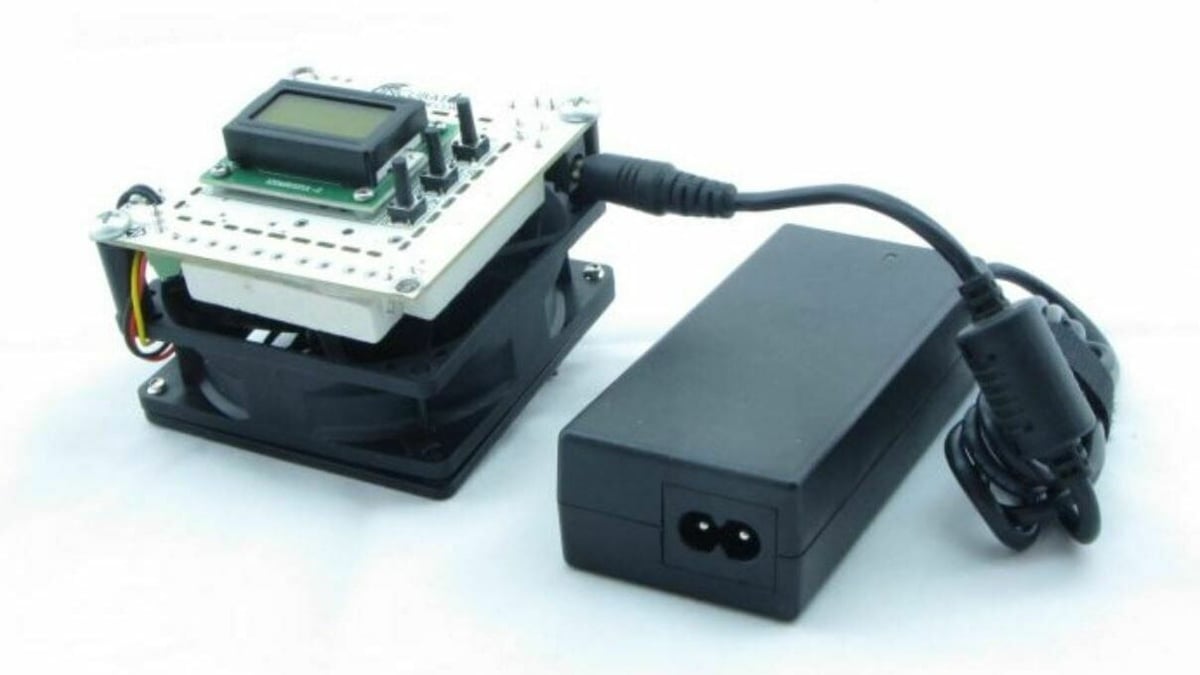
The IncuKit Mini from Incubator Warehouse is an all-in-one small-footprint fan heater with a built-in thermostat and temperature controller. With no covering for the PCBs, the IncuKit Mini looks very DIY, but don’t let this fool you.
The IncuKit’s 40-watt heater component can heat a container, like an enclosure, to over 37 °C (over 100 °F). While some filaments work best with a higher ambient temperature, this should still work, especially because your printer will also produce some heat on its own.
When installing this heater, try placing the fan away from your printer’s build space so it doesn’t interfere with the printing process. You can power this heater using a wall outlet, and controlling the IncuKit’s temperature is as easy as clicking a few buttons.
- Price: ~$65
- Temperature controller required: No (integrated)
- Assembly: Easy
Car Heater
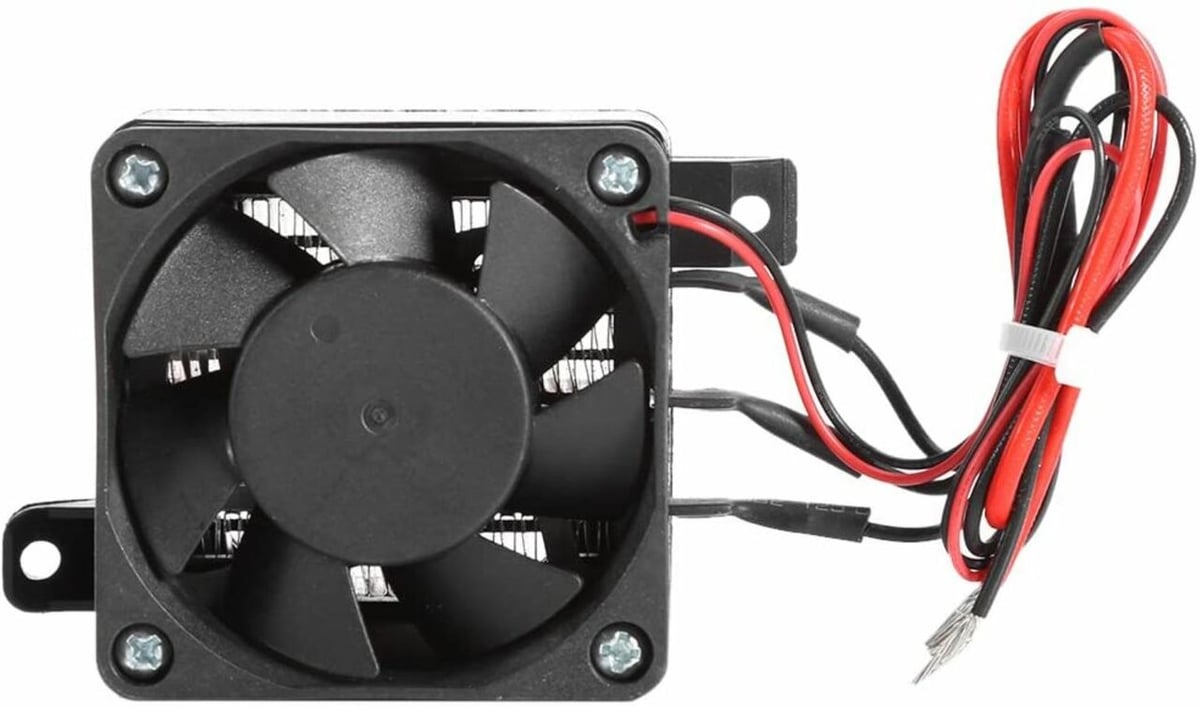
Another PTC heating option is a car heater, which is usually much smaller than a traditional PTC space heater, perfect for fitting inside a 3D printer enclosure. A car heater is a fan-powered heater with a radiator attached to control the output air temperature. Reviews suggest that they’re perfect for heating an enclosure to help your machine print higher-temperature materials.
These devices typically don’t have a temperature controller, so we suggest attaching one to regulate the heat produced in your enclosure. Powering the heater can be done by connecting it to your mainboard (if compatible) or through a conversion to a wall outlet plug.
Alternatively, you can try to use a car windshield heater (or defroster) to keep your 3D printer enclosure warm. However, it’s worth noting that this path might be more difficult as most car windshield heaters don’t have a temperature control feature. With this, you wouldn’t be able to leave the device running for extended periods of time.
- Price: ~$30
- Temperature controller required: Yes
- Assembly: Medium
Infrared Bulb

An infrared (IR) bulb is a type of incandescent (makes light through heat) light bulb that emits infrared radiation (don’t worry, you won’t be harmed) to produce heat. Commonly used to heat small spaces, a single infrared bulb should be perfect for heating an enclosure. One of the best parts of this enclosure heating option is that it doesn’t use a fan, so you shouldn’t have to worry about air drafts ruining your prints.
This type of heater typically produces more heat the longer you leave it turned on, so it’s hard to set an exact maximum temperature on these bulbs. However, powering one on before every print should work just fine. As for powering the device, you probably won’t be able to use your printer’s power supply or mainboard easily, so a compatible lamp might be the easiest option. If you take this route, make sure to position the bulb in your enclosure so the heat stays around your printer.
- Price: ~$10
- Temperature controller required: Yes
- Assembly: Medium-hard
Halogen Lamp
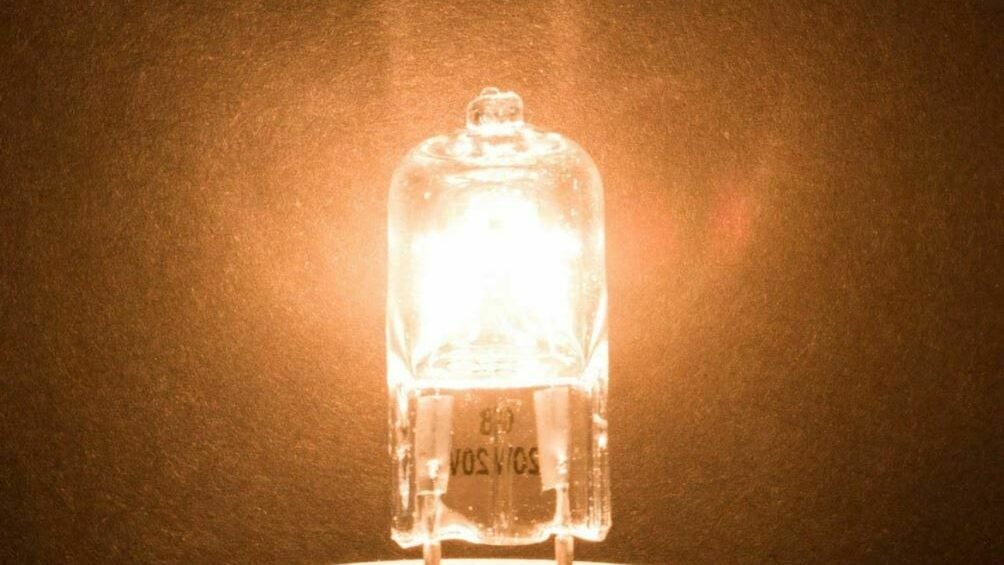
A halogen lamp is another type of incandescent heating lamp, similar to an IR lamp, but halogen lamps typically give off less heat. Halogen bulbs work by sending an electric current through a tungsten wire strand, producing both heat and light.
Like IR bulbs, halogen lamps offer the advantage of not producing airflow, which should help with print quality. When looking for one, make sure to check the bulb’s wattage; a higher wattage usually yields higher temperatures. To power this type of bulb, you should consider getting a compatible lamp and placing it inside your printer’s enclosure (or at least the bulb) to direct the heat toward your printer.
- Price: ~$1 per light (~$10 for a 10-pack)
- Temperature controller required: Yes
- Assembly: Medium-hard
DIY Printer Heater
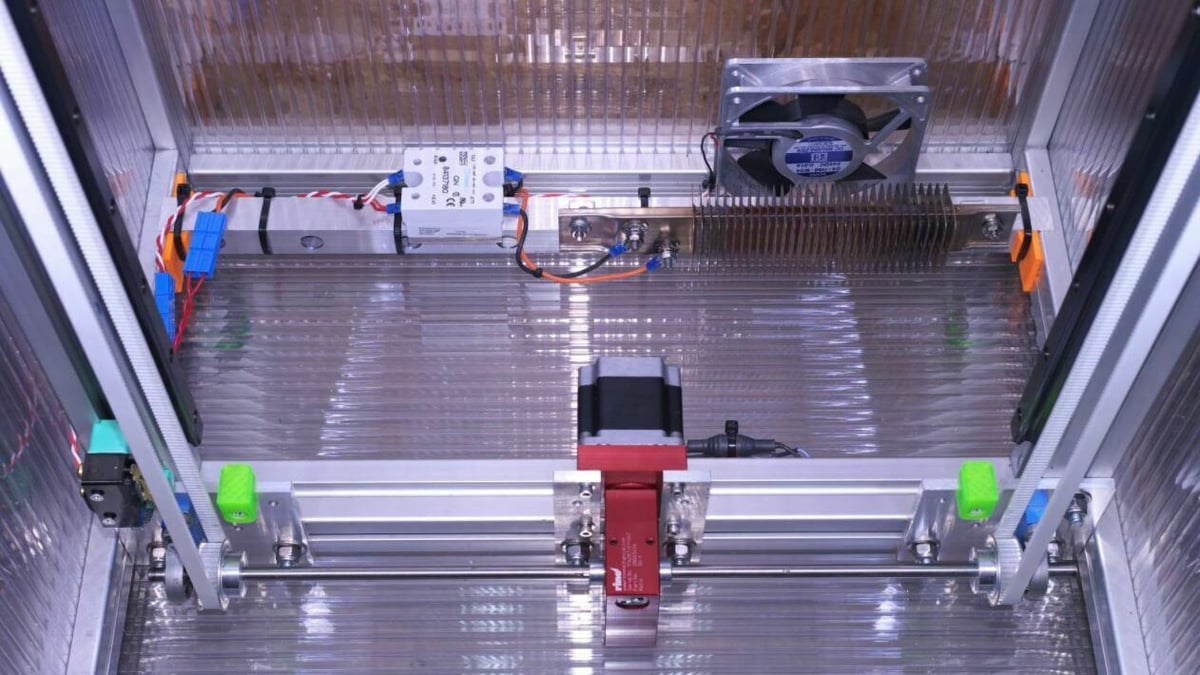
This enclosure heater is a DIY option meant for 3D printer enclosures, and it’s already been tested and shown to work great. According to the creator, this setup can heat an enclosure to around 50 °C, which is perfect for printing ABS (among other materials).
You can build your own DIY enclosure heater using a 500-W 120-V heating component, 100-K thermistor, a 24-V fan, and a few other parts listed on the maker’s Hackaday post. Unfortunately, the designer didn’t provide instructions for assembling the enclosure. However, it shouldn’t be that complicated because the device is essentially just a heater stacked on top of a fan with no real frame.
You can connect the thermistor to your printer’s mainboard and, if open source, add a PID algorithm to monitor and control the heater. If your printer’s mainboard isn’t open source or doesn’t have extra heating (and thermistor) ports, you might be able to get it to work using an external PID temperature controller and wall outlet.
- Price: ~$80
- Temperature controller required: Yes
- Assembly: Medium
Alternative: Insulative Panels
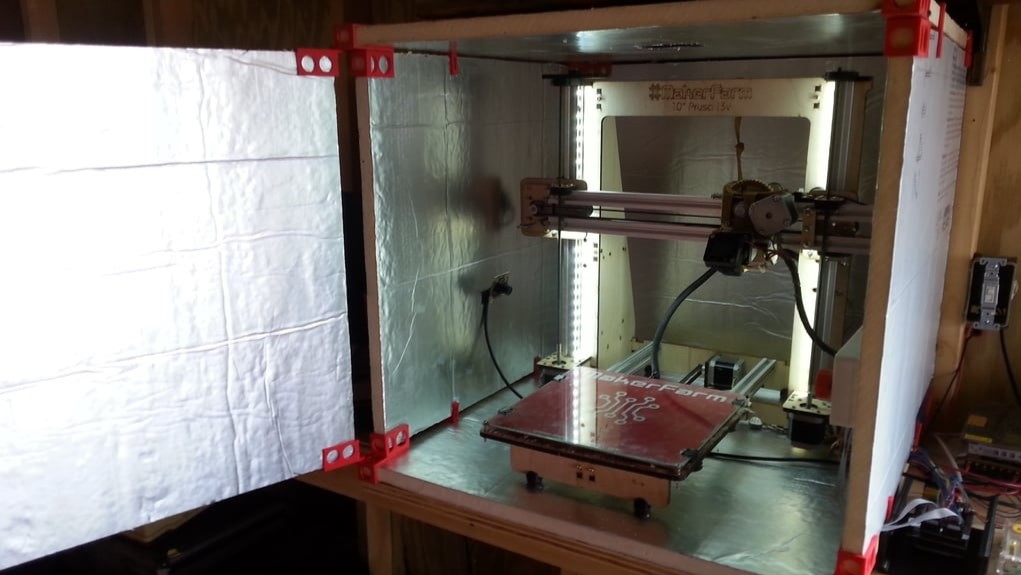
Lastly, while not a heating device, insulative panels can also help you achieve a warmer print space inside your enclosure. This solution involves lining your enclosure with insulative materials that will trap more heat inside, hopefully boosting the quality of prints.
There are many ways you can insulate your 3D printer enclosure, and the best option will depend on your specific setup. One of the easiest ways to achieve this is to line the inside of the chamber with reflective thermal insulation tape, which costs only about $20-$30. However, if you’re looking for a more advanced insulation option, you might be interested in using cork, rock wool, ceramic fiber, or even Styrofoam panels, as they’re very effective insulators.
But, no matter what option you choose, make sure to keep in mind any associated health risks, as many insulative materials contain carcinogens and other hazardous substances.
- Price: $20-$60
- Temperature controller required: N/A (no)
- Assembly: Easy
License: The text of "3D Printer Enclosure Heater: The Best DIY Options of 2023" by All3DP is licensed under a Creative Commons Attribution 4.0 International License.
CERTAIN CONTENT THAT APPEARS ON THIS SITE COMES FROM AMAZON. THIS CONTENT IS PROVIDED ‘AS IS’ AND IS SUBJECT TO CHANGE OR REMOVAL AT ANY TIME.






